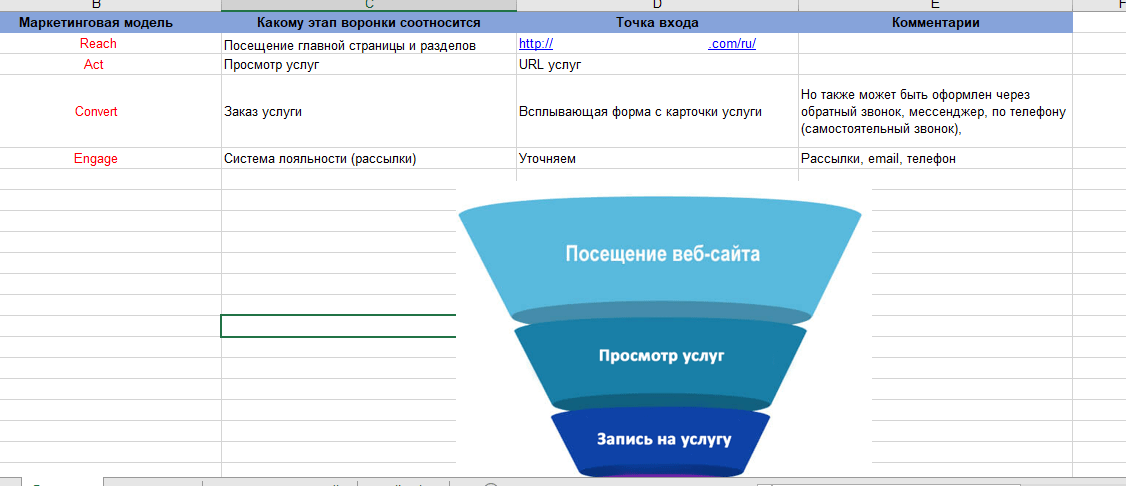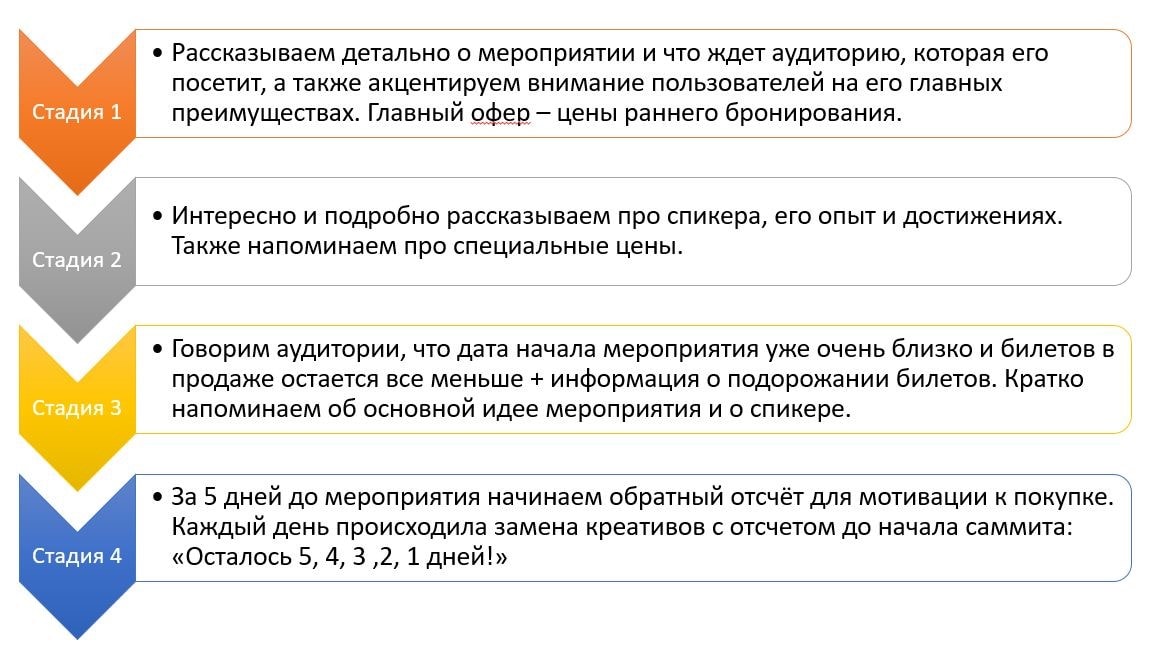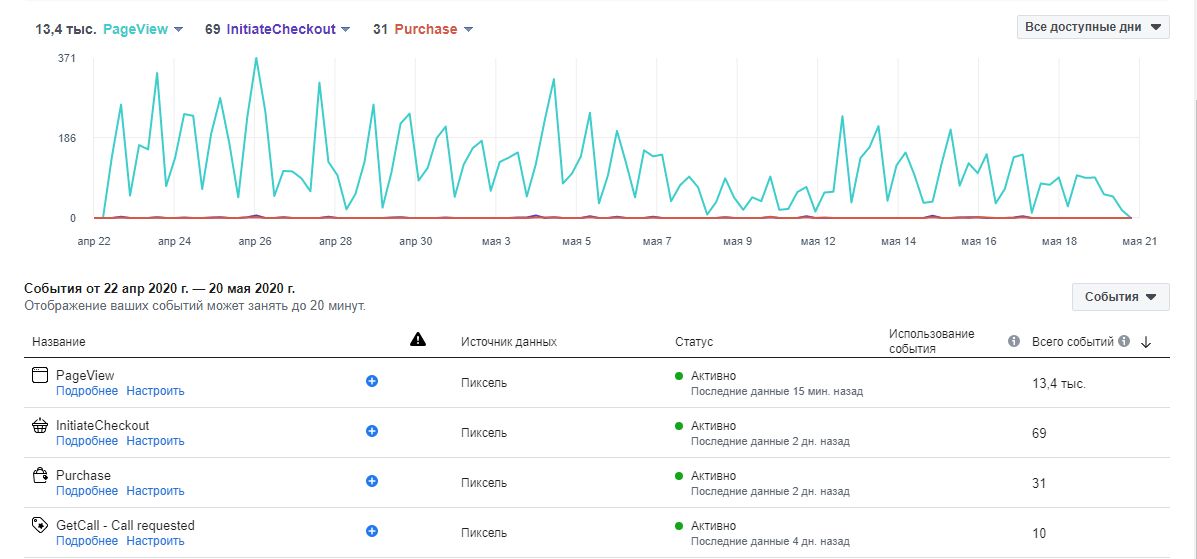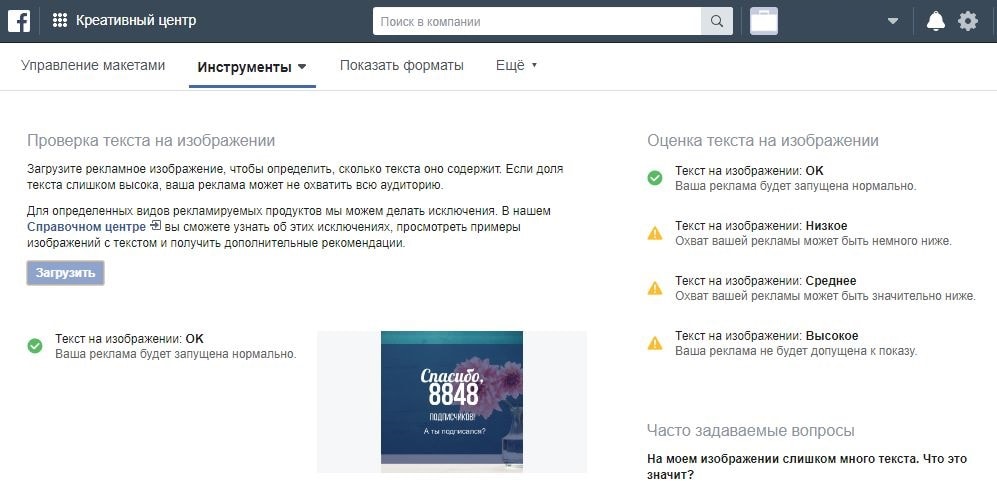Content
We use this checklist at MAVR to prepare for advertising campaigns on Facebook and Instagram. Like all checklists, it is not perfect and requires basic knowledge of marketing, targeted advertising, and minimal experience with Ads and Facebook Business Manager.
Also, not for all projects, not for all niches, it can be taken and used, only your common sense will help you.
Checklist for setting up targeted advertising on Facebook, Instagram
1. Audit of advertising campaigns
Before the start of all work, we audit the Client’s advertising campaigns (if any). This is necessary in order to understand what has already worked, what creatives, what audiences, etc.
2. We develop an advertising campaign strategy
We prescribe the classic RACE funnel.
An example written in stages (except for involvement):
Stage 1 – Cold audience. Detailed targeting by interests, similar audience to the customer base (email, phone numbers).
Stage 2 – Warm audience. Remarketing from the site, interaction with the page, page subscribers.
Stage 3 – Hot audience. Remarketing based on recent actions from the site, site visitors through organic or social networks, customer base (email, phone numbers). Use of lead forms (call for correspondence, additional goodies).
Example – The Customer Path for gathering an audience for an event.
We prescribe the structure of advertising campaigns, audiences.
The structure of advertising campaigns (hereinafter – AC) may look like this (it depends very much on the niche, this is just an example!):
RK on a wide scale – DO NOT use interests at all!
GO: men only, age from and to
GO: women only, age from and to
AC on Look-a-Like (similar audience to the audience by pixel or to the Customer base)
4 GO: from 1 to 4% (sometimes you can increase the % to 5%, oddly enough, but usually audiences of 3-4% work better than 1-2%).
AC for Interests (up to 3 interests in each GO)
We do not mix interests by type. Types: Demographic interests; Interests; Behavior.
GO Example: Behavior: Anniversary; Engaged Buyers
AC to Retargeting (we return the audience by the pixel installed on the site! The goal is only Coverage)
3 GO for engagement by % interaction with the site over the last 180 days: 25%, 10%, 5% (sometimes 5% is not even worth testing, you need to look at Google Analytics for more details).
Show frequency: 3 shows every 7 days.
3. Features of setting up advertising campaigns
- For the Cold audience, we always exclude people by Pixel, page subscribers, loaded base.
- When calculating the audience, it must be more than 1000!
- When testing, do not enable CBO (Campaign Budget Optimization). If the decision is made to enable CBO, all ad groups (hereinafter referred to as GO) should have approximately the same number of audiences.
Only in retargeting can we choose automatic placements! In all other RKs, we select only the main Facebook and Instagram feeds, as well as Instagram Stories.
- We bring the audience into the office.
- If there is a website, then the Facebook pixel must be installed on it. The setup also involves scripting events on the site, as well as adding Conversions to the Business manager
Example of configured events:
Example of customized conversions:
- It is optimal to test hypotheses for at least 2 weeks (we look adjusted for the decision-making cycle for a particular project).
- Attention: do not use the goal of viewing the landing page if there is no place to put the pixel. Use the goal – clicks!
- Don’t forget to put UTM tags.
- We check the amount of text on the photo / video before launching advertising campaigns in the Creative Center.
- Be sure to correctly set up Google Analytics for in-depth analysis of advertising campaigns in terms of behavior on the site (since the attribution window will be different).
- In the process of analyzing the results obtained, use pixel analytics.
- After the test, we pay attention to all factors: banners, texts, audiences, budget. It is especially important to analyze the cost per thousand impressions in dynamics.
Expert in legal marketing. Head of marketing agency MAVR.
Business degree “Master of Business Administration” (MBA).






